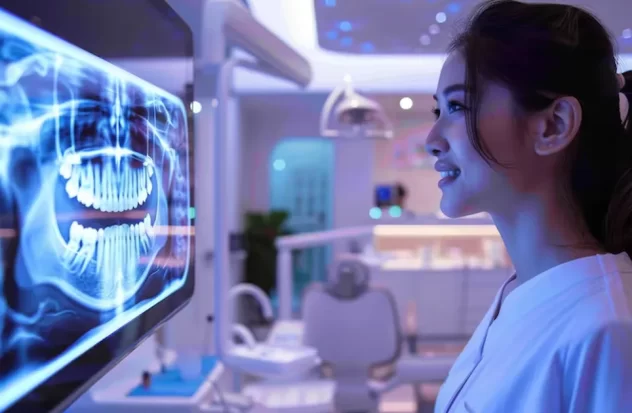MIAMI.- After training with Overjet’s dental artificial intelligence (AI) technology, University of Florida dental students improved their ability to detect cavities by more than 40%, which optimizes procedures and reduces treatment costs.
A report from the University of Florida indicates that 100 students completed training in the Overjet module, an AI-powered dental technology tool, that helps dentists and hygienists diagnose and evaluate potential dental problems.
Cavities are damage to the surface of the teeth, This happens when bacteria in the mouth produce acid that attacks the enamel. They appear as cavities in the tooth and if left untreated can cause pain, infection and even tooth loss.
2.3 billion people with cavities
Cavities are very difficult to diagnose with X-rays.They appear as slightly different, grey shades on a monochrome X-ray and are usually only identified in 20% to 40%. Small cavities are particularly easy to miss and can often be reversed with treatment rather than needing to be filled more invasively.
The Institute of Advanced Postgraduate Studies in Dentistry (IPAO) in Spain points out that the diagnosis and treatment of dental caries traditionally depends on clinical examination and the interpretation of radiographic images. However, with rapid technological advances, the dental diagnostic landscape is transforming. The digitalization of dentistry has introduced a new concept in this field: artificial intelligence.
According to data from the World Health Organization, more than 530 million children worldwide suffer from cavities in their baby teeth, while in the case of permanent teeth the figure rises to 2.3 billion people affected.
Machine learning
Overjet can detect cavities, hardened plaque and many other structures essential for oral health. The identification module the UF students trained on highlights cavities in bright colors and helps create a treatment plan. The mechanical identification helped the students — some of whom had seen few X-rays during their training — begin to more confidently identify cavities on their own.
Students can examine both the X-ray and the AI tool in the classroom, giving them the opportunity to self-assess. UF is also the first dental school to incorporate the system into its curriculum, so students will graduate with practical knowledge of AI and computer vision.
Pronto, The Faculty of Dentistry will also adopt Overjet for patient care and will eventually open it up to the more than 100,000 patient visits the school provides each year. That means earlier, more accurate detection of cavities and better treatment plans for patients.
In the UF study, the module detected 91 percent of large cavities and 69 percent of early-stage cavities, making it much more sensitive than manual X-ray readings.
Source: University of Florida / Advanced Graduate Institute of Dentistry / Las Americas Newspaper


